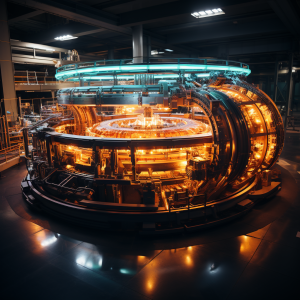
What are the basic principles of Thermodynamics?
Thermodynamics is a branch of physics that describes the behavior of systems in terms of energy and its transformations. It is based on four fundamental laws, often referred to as the zeroth, first, second, and third laws of thermodynamics. These laws govern how energy can be transferred and transformed and provide insights into the directionality of these processes.
Zeroth Law of Thermodynamics
The Zeroth Law of Thermodynamics is about thermal equilibrium. If two systems are each in thermal equilibrium with a third system, then they are in thermal equilibrium with each other. This law allows us to introduce the concept of temperature and provides the foundation for the comparison of temperatures between different systems.
First Law of Thermodynamics
The First Law of Thermodynamics is essentially the law of conservation of energy. It states that energy cannot be created or destroyed, only transformed or transferred. In other words, the total energy of an isolated system remains constant.
For a thermodynamic system, this law can be stated as: ΔU = Q – W. Here, ΔU is the change in internal energy of the system, Q is the heat added to the system, and W is the work done by the system on its surroundings. This equation says that any increase in a system’s internal energy can come from adding heat to the system or doing work on the system, and any decrease can come from the system losing heat or doing work on its surroundings.
Second Law of Thermodynamics
The Second Law of Thermodynamics introduces the concept of entropy, a measure of the disorder or randomness of a system. This law states that the entropy of an isolated system will always increase over time, or remain constant in ideal cases where the system is in a steady state or undergoing a reversible process. It will never decrease. This is often interpreted as nature’s preference for disorder over order.
The second law also states that heat cannot spontaneously flow from a colder body to a hotter one. In other words, in a closed system, energy will not flow spontaneously from low-energy areas to high-energy areas. This gives us the directionality of thermodynamic processes and tells us that while energy is conserved (according to the first law), all forms of energy are not equally useful.
Third Law of Thermodynamics
The Third Law of Thermodynamics states that as the temperature of a system approaches absolute zero, the entropy of the system approaches a minimum value. For a perfect crystal, this minimum value is zero. This law implies that it is impossible to reach absolute zero temperature by any finite number of processes.
These four laws form the basis of thermodynamics and provide a comprehensive framework for understanding the relationships between heat, work, temperature, and energy. They also provide constraints on what is possible and impossible in the physical world.
Beyond these laws, concepts like systems (open, closed, isolated), states, processes (reversible, irreversible, isothermal, adiabatic), and properties (pressure, volume, temperature, entropy, enthalpy, internal energy) are crucial in the study of thermodynamics.
Thermodynamics has vast applications in diverse fields including physics, engineering, chemistry, biology, and environmental science. It underpins our understanding of engines, refrigerators, and power plants, explains chemical reactions and phase transitions, and even has implications for the fate of the universe. Despite being developed in the 19th century, the principles of thermodynamics remain profoundly relevant in both pure and applied sciences.




